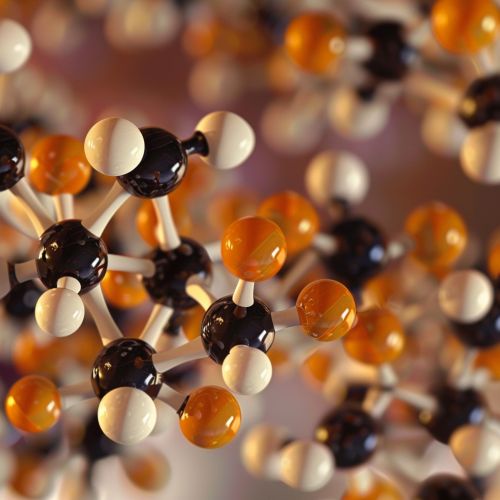Glucocorticoid: Difference between revisions
(Created page with "== Introduction == Glucocorticoids are a class of corticosteroids, which are a class of steroid hormones. They are produced in the adrenal cortex and are involved in the regulation of various physiological processes, including the immune response, metabolism, and stress response. Glucocorticoids exert their effects by binding to the glucocorticoid receptor, which then translocates to the cell nucleus and influences gene expression. This article delves into the biochemis...") |
No edit summary |
||
| Line 85: | Line 85: | ||
Glucocorticoids are a vital class of steroid hormones with wide-ranging effects on metabolism, immune function, and stress response. Their potent anti-inflammatory and immunosuppressive properties make them invaluable in clinical practice, although their use is associated with significant side effects. Ongoing research aims to develop safer and more effective glucocorticoid-based therapies, as well as to deepen our understanding of their molecular mechanisms. | Glucocorticoids are a vital class of steroid hormones with wide-ranging effects on metabolism, immune function, and stress response. Their potent anti-inflammatory and immunosuppressive properties make them invaluable in clinical practice, although their use is associated with significant side effects. Ongoing research aims to develop safer and more effective glucocorticoid-based therapies, as well as to deepen our understanding of their molecular mechanisms. | ||
[[Image:Detail-79523.jpg|thumb|center|Close-up of a molecular model of cortisol, a key glucocorticoid.|class=only_on_mobile]] | |||
[[Image:Detail-79524.jpg|thumb|center|Close-up of a molecular model of cortisol, a key glucocorticoid.|class=only_on_desktop]] | |||
== See Also == | == See Also == | ||
Latest revision as of 17:46, 18 May 2024
Introduction
Glucocorticoids are a class of corticosteroids, which are a class of steroid hormones. They are produced in the adrenal cortex and are involved in the regulation of various physiological processes, including the immune response, metabolism, and stress response. Glucocorticoids exert their effects by binding to the glucocorticoid receptor, which then translocates to the cell nucleus and influences gene expression. This article delves into the biochemistry, physiological roles, clinical applications, and potential side effects of glucocorticoids.
Biochemistry of Glucocorticoids
Structure
Glucocorticoids share a common steroid structure, characterized by a cyclopentanoperhydrophenanthrene ring system. The most well-known glucocorticoid is cortisol, also known as hydrocortisone. The structure of cortisol includes a hydroxyl group at the C11 position, a ketone group at the C3 position, and a double bond between C4 and C5.
Synthesis
Glucocorticoid synthesis occurs in the adrenal cortex, specifically in the zona fasciculata. The process begins with cholesterol, which is converted to pregnenolone via the enzyme cytochrome P450 side-chain cleavage enzyme (CYP11A1). Pregnenolone is then converted to 17α-hydroxypregnenolone by 17α-hydroxylase (CYP17A1), followed by conversion to 11-deoxycortisol by 21-hydroxylase (CYP21A2). Finally, 11-deoxycortisol is converted to cortisol by 11β-hydroxylase (CYP11B1).
Mechanism of Action
Glucocorticoids exert their effects by binding to the intracellular glucocorticoid receptor (GR). Upon binding, the glucocorticoid-GR complex translocates to the nucleus, where it can bind to glucocorticoid response elements (GREs) in the DNA. This binding modulates the transcription of target genes, leading to either upregulation or downregulation of gene expression. Key genes regulated by glucocorticoids include those involved in glucose metabolism, anti-inflammatory responses, and immune modulation.
Physiological Roles
Metabolic Effects
Glucocorticoids play a crucial role in metabolism, particularly in glucose homeostasis. They promote gluconeogenesis in the liver, increase glycogen storage, and inhibit glucose uptake in peripheral tissues. Additionally, glucocorticoids stimulate lipolysis and protein catabolism, providing substrates for gluconeogenesis.
Immune System Modulation
One of the most significant effects of glucocorticoids is their anti-inflammatory and immunosuppressive properties. They inhibit the production of pro-inflammatory cytokines, reduce the migration of immune cells to sites of inflammation, and promote the apoptosis of certain immune cells. These actions make glucocorticoids effective in treating inflammatory and autoimmune conditions.
Stress Response
Glucocorticoids are integral to the body's stress response. During stress, the hypothalamus releases corticotropin-releasing hormone (CRH), which stimulates the anterior pituitary to secrete adrenocorticotropic hormone (ACTH). ACTH then prompts the adrenal cortex to produce and release glucocorticoids, which help the body adapt to stress by mobilizing energy reserves and modulating immune responses.
Clinical Applications
Therapeutic Uses
Glucocorticoids are widely used in clinical practice due to their potent anti-inflammatory and immunosuppressive effects. They are employed in the treatment of various conditions, including:
- Asthma
- Rheumatoid arthritis
- Inflammatory bowel disease
- Systemic lupus erythematosus
- Allergic reactions
- Adrenal insufficiency
Administration Routes
Glucocorticoids can be administered through various routes, depending on the condition being treated. Common routes include oral, intravenous, intramuscular, inhalational, and topical administration. The choice of route affects the onset and duration of action, as well as the potential for side effects.
Side Effects
Long-term use of glucocorticoids can lead to a range of side effects, including:
Molecular Biology
Gene Regulation
Glucocorticoids influence the expression of numerous genes involved in metabolic processes, immune function, and cellular stress responses. The glucocorticoid receptor (GR) acts as a transcription factor, binding to glucocorticoid response elements (GREs) in the promoter regions of target genes. This binding can either activate or repress gene transcription, depending on the specific GRE and the presence of co-regulatory proteins.
Signal Transduction
The glucocorticoid receptor (GR) is a member of the nuclear receptor superfamily. Upon binding to glucocorticoids, the GR undergoes a conformational change, dissociates from heat shock proteins, and translocates to the nucleus. In the nucleus, the GR can interact with other transcription factors, such as NF-κB and AP-1, to modulate gene expression. This interaction can lead to the repression of pro-inflammatory genes and the activation of anti-inflammatory genes.
Pharmacokinetics
Absorption
The absorption of glucocorticoids varies depending on the route of administration. Oral glucocorticoids are well absorbed from the gastrointestinal tract, while inhaled glucocorticoids are absorbed through the respiratory epithelium. Topical glucocorticoids are absorbed through the skin, with the extent of absorption influenced by factors such as skin integrity and the presence of occlusive dressings.
Distribution
Once absorbed, glucocorticoids are distributed throughout the body, with a significant portion bound to plasma proteins such as corticosteroid-binding globulin (CBG) and albumin. The free, unbound fraction is biologically active and capable of crossing cell membranes to exert its effects.
Metabolism
Glucocorticoids are primarily metabolized in the liver by enzymes such as 11β-hydroxysteroid dehydrogenase (11β-HSD) and cytochrome P450 enzymes. The metabolites are then conjugated with glucuronic acid or sulfate and excreted in the urine.
Excretion
The excretion of glucocorticoids and their metabolites occurs primarily through the kidneys. The rate of excretion can be influenced by factors such as renal function and the presence of other medications that affect renal clearance.
Research and Future Directions
Novel Therapeutic Approaches
Research is ongoing to develop novel glucocorticoid receptor modulators (GRMs) that retain the therapeutic benefits of glucocorticoids while minimizing side effects. These GRMs aim to selectively modulate GR activity, potentially offering improved safety profiles for long-term use.
Biomarker Development
The identification of biomarkers that predict response to glucocorticoid therapy is an area of active investigation. Such biomarkers could help tailor treatment to individual patients, optimizing efficacy and minimizing adverse effects.
Mechanistic Studies
Advances in molecular biology and genomics are providing new insights into the mechanisms by which glucocorticoids exert their effects. Studies using techniques such as CRISPR gene editing and RNA sequencing are uncovering novel regulatory pathways and potential therapeutic targets.
Conclusion
Glucocorticoids are a vital class of steroid hormones with wide-ranging effects on metabolism, immune function, and stress response. Their potent anti-inflammatory and immunosuppressive properties make them invaluable in clinical practice, although their use is associated with significant side effects. Ongoing research aims to develop safer and more effective glucocorticoid-based therapies, as well as to deepen our understanding of their molecular mechanisms.


